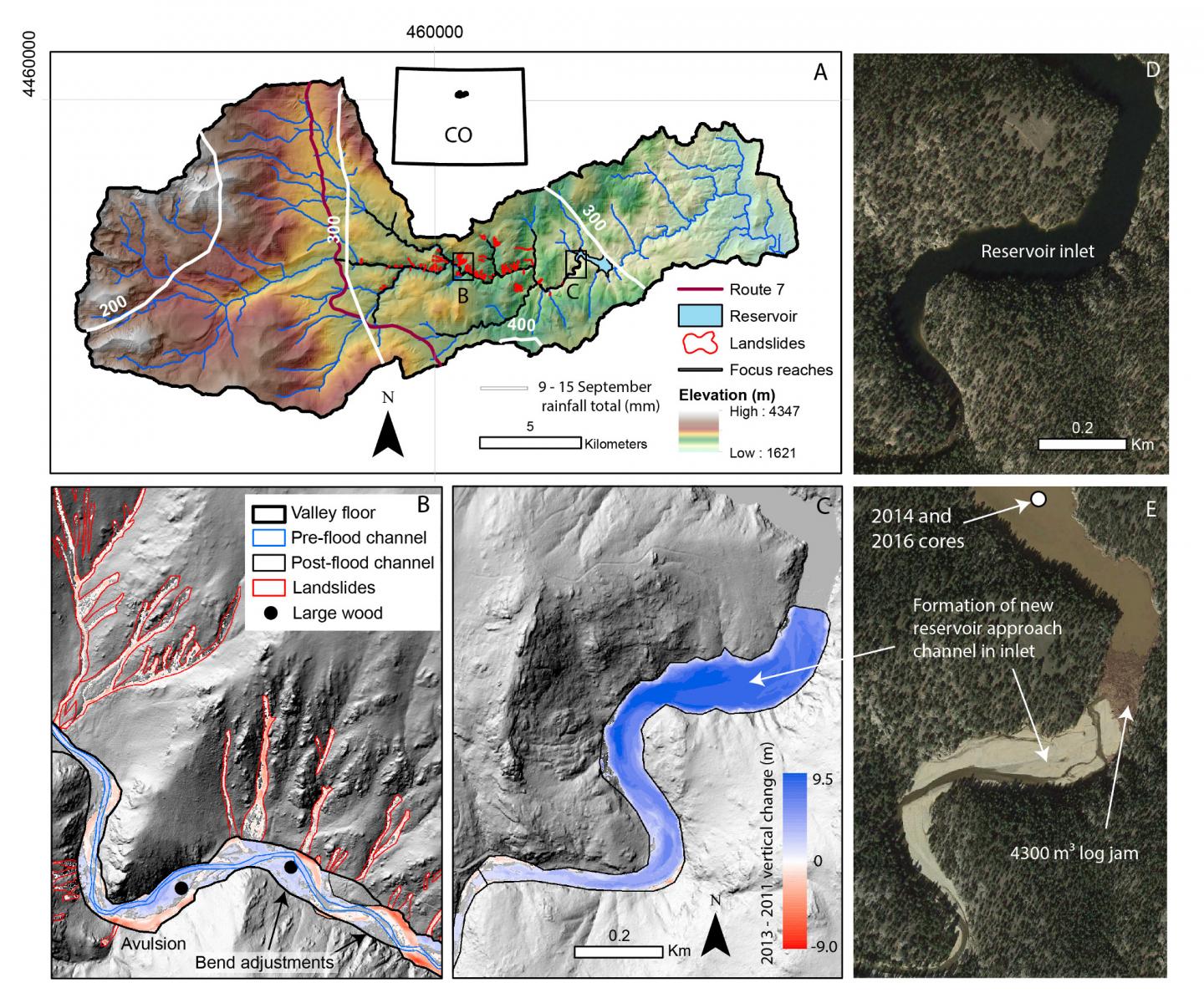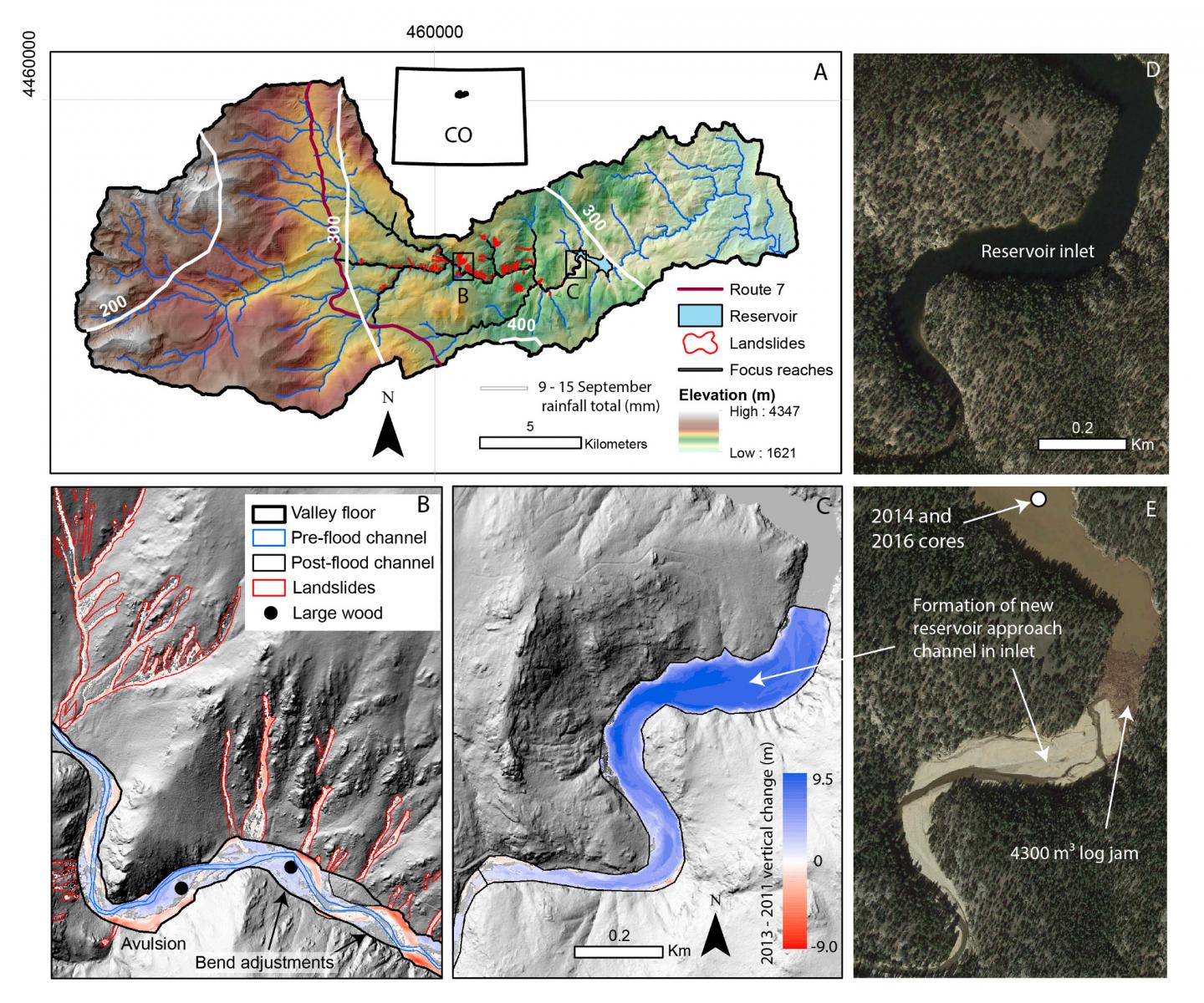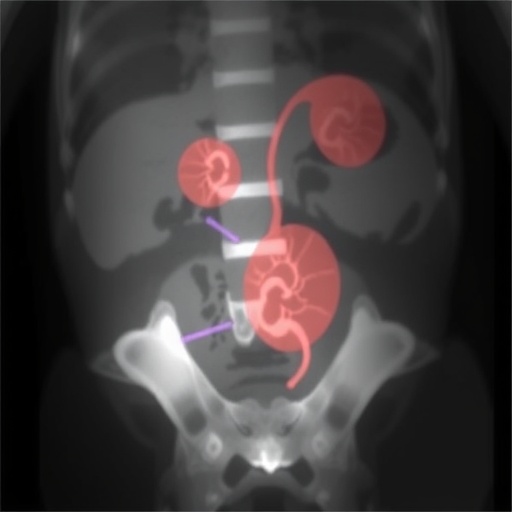
Credit: Images in D and E are from Google Earth™
Boulder, Colo., USA: Sara Rathburn of Colorado State University and colleagues have developed an integrated sediment, wood, and organic carbon budget for North St. Vrain Creek in the semi-arid Colorado Front Range following an extreme flooding event in September of 2013. Erosion of more than 500,000 cubic meters, or up to ~115-years-worth of weathering products, occurred through landsliding and channel erosion during this event.
More than half of the eroded sediment was deposited at the inlet and delta of a water supply reservoir, resulting in the equivalent of 100 years of reservoir sedimentation and 2% loss in water storage capacity. The flood discharged 28 mega-grams of carbon from one square kilometer of land (28 Mg C/km2), which is more like what would happen in humid, tectonically active areas.
To get an idea of what that means, Rathburn explains, a mega-gram of carbon (C) eroded from one square kilometer of land is equivalent to about a million paper clips covering an 18-hole golf course. So in this scenario, the flood discharged 28 million paper clips from just a golf course-sized area.
Post-flood remobilization resulted in a further ~100-years-worth of reservoir sedimentation plus export of an additional 1.3 mega-grams of carbon per square kilometer (1.3 Mg C/km2) of wood. Pronounced channel widening during the flood created accommodation space for 40% of flood sediment and storage of wood and eroded carbon. Confined channels, normally dismissed as transport reaches, can store and export substantial amounts of flood constituents.
The results of this study by Rathburn and colleagues indicate that many flood-affected Colorado Front Range rivers will export sediment, wood, and carbon for years to come, posing ongoing challenges for water-supply management, with implications for terrestrial carbon cycling.
###
ARTICLE
The fate of sediment, wood and organic carbon eroded during an extreme flood, Colorado Front Range, USA http://geology.gsapubs.org/content/early/2017/03/27/G38935.1.abstract
Authors: S.L Rathburn, G.L. Bennett, E.E. Wohl, C. Briles, B. McElroy, and N. Sutfin. Contact: Sara Rathburn, Colorado State University, Fort Collins, Colorado, USA, [email protected].
GEOLOGY articles are online http://geology.gsapubs.org/. Representatives of the media may obtain complimentary articles by contacting Kea Giles at the e-mail address above. Please discuss articles of interest with the authors before publishing stories on their work, and please make reference to GEOLOGY in articles published. Non-media requests for articles may be directed to GSA Sales and Service, [email protected].
http://www.geosociety.org
Media Contact
Kea Giles
[email protected]
@geosociety
http://www.geosociety.org
############
Story Source: Materials provided by Scienmag





